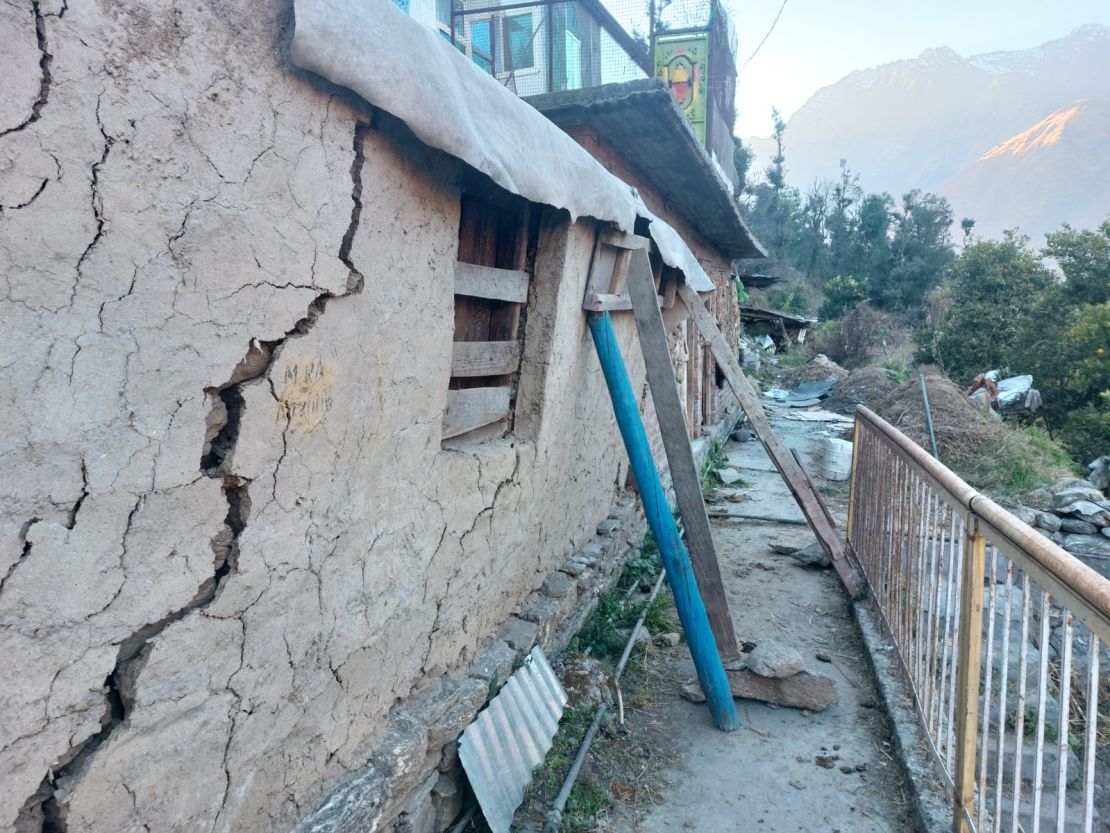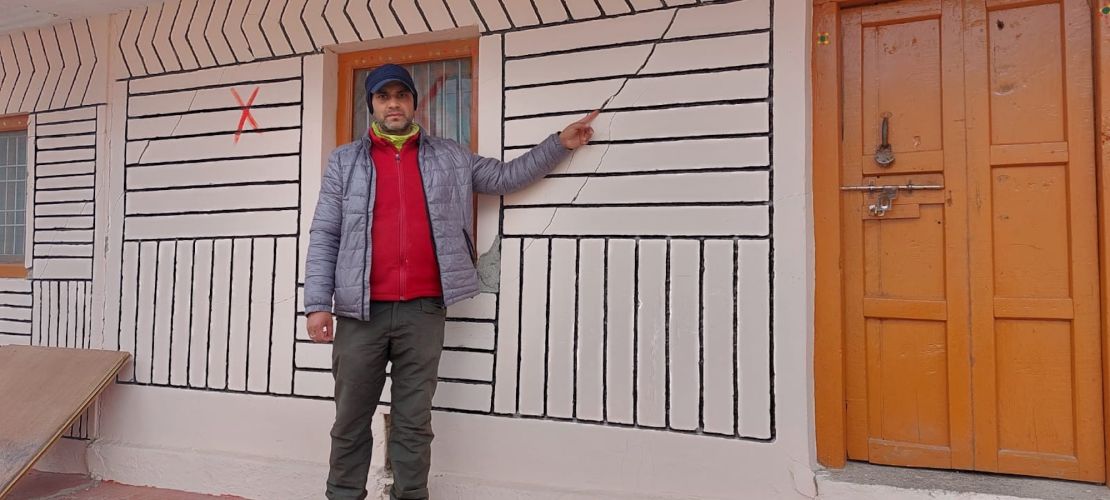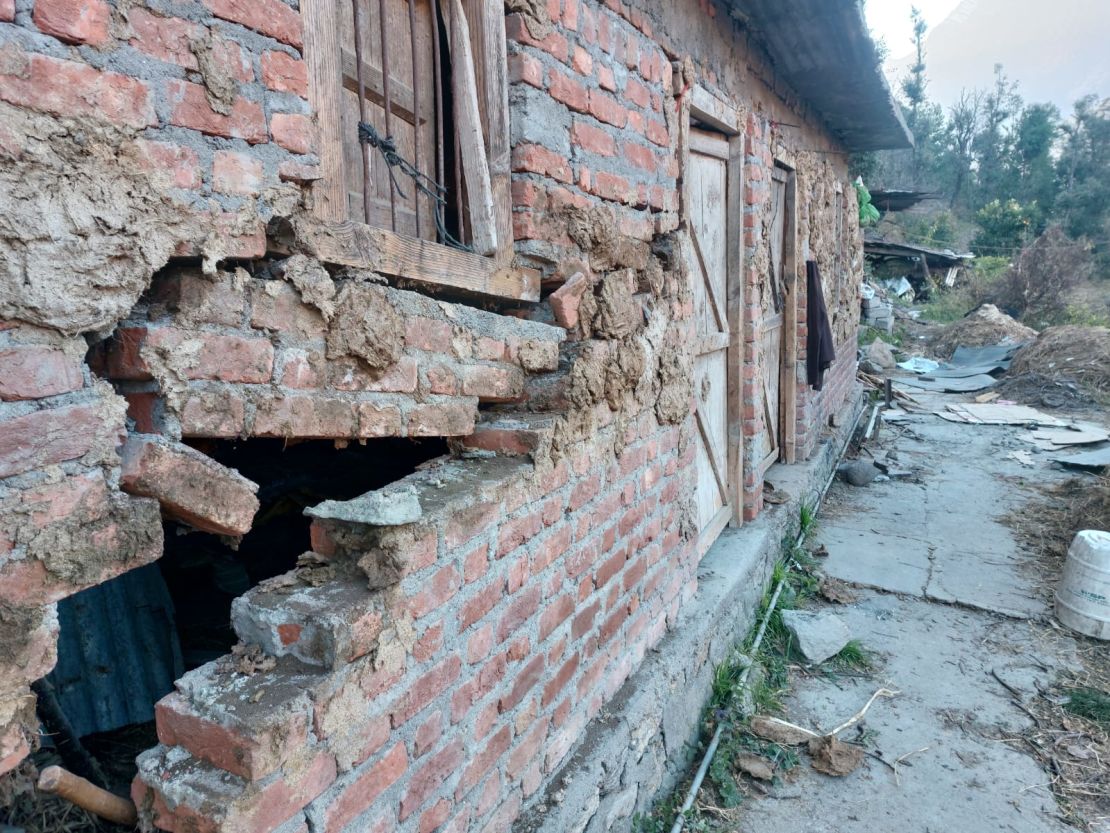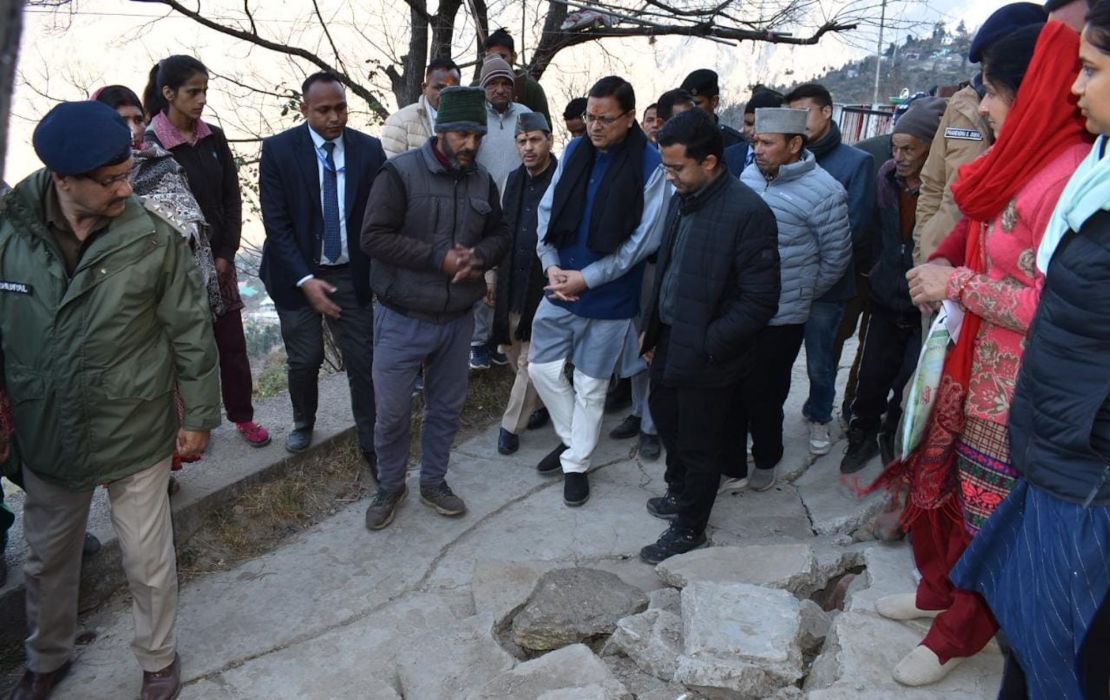For years, residents in the northern Indian city of Joshimath have complained to local officials that their homes are sinking. Now authorities are being forced to take action, evacuating nearly 100 families in the last week and expediting the arrival of experts to determine the cause.
Cracks running through the city are now so wide that hundreds of homes are no longer habitable, and some fear that India could lose a key gateway to religious pilgrimages and tourist expeditions on nearby mountain trails.
Located in the northeastern state of Uttarakhand, Joshimath is bordered by two rivers and nestled on the slopes of the Himalayas, which environmental experts say makes it particularly susceptible to earthquakes, landslides and erosion.
“Joshimath, and many other towns in the Himalayas, are geologically prone to subsidence,” otherwise known as the sinking or settling of the Earth’s surface, said Sameer Kwatra, policy director for the Natural Resources Defense Council’s India program.
Kwatra added that the natural factors which put Joshimath, home to around 25,000 people, at risk of sinking are “being exacerbated by large scale construction projects as well as climate induced flash floods and extreme rainfall.”
In August 2022, a team of scientists, geologists and researchers organized by the state government of Uttarakhand conducted a geological survey of Joshimath and noted that local residents reported an accelerated pace of land erosion that year, caused in large part by heavy rainfall in October 2021 and devastating flash flooding earlier that year, sparking concerns about the impact of climate change on the region.
The survey found extensive damage to houses in Joshimath, stating that some houses were “unsafe for human habitation” and posed a “grave risk” to their inhabitants.
The report pointed to visible cracks in walls, floors and along various roads as evidence that the city was sinking and recommended construction in certain areas be curtailed, with “further developmental activities in the area … restricted to the extent possible.”
Despite the recommendation, construction in the region continued until just last week. On January 5, the district administration temporarily shut down all construction work in Joshimath, including work on a bypass road and the National Thermal Power Corporation’s (NTPC) Tapovan Vishnugad hydropower project. The hydropower plant is being constructed on the Dhauliganga river which partially borders the eastern side of Joshimath. Construction on the project involves tunneling, which some residents and environmental experts believe may have worsened the land erosion.
According to local news outlets, NTPC issued a statement on January 5, the day construction was stopped, stating “NTPC wants to inform with full responsibility that the tunnel has nothing to do with the landslide happening in Joshimath city.”
In an emailed statement to CNN, NTPC said the tunnel was completed more than a decade ago, and there are no recent signs of sinking on the surface near the tunnel, which is around 1 kilometer from the town and about 1 kilometer deep.

Families forced to flee
Suraj Kaparuwan, a 38-year-old businessman who runs a small hotel in Joshimath, told CNN cracks began appearing in his field and in the walls of his home a year ago, but the situation has worsened in recent months.
“Hairline cracks in the field started appearing about a year back. They’ve been widening over time, especially in the last two months. They’re now about 3-feet wide,” Kaparuwan told CNN.

Last Wednesday evening, Kaparuwan’s family wife and two sons left Joshimath for Srinagar Garhwal, another city further south in the same state.
Kaparuwan initially stayed behind to join what he said were thousands of Joshimath residents and allies from nearby villages protesting in front of local administrative buildings, calling for an end to the construction and requesting proper compensation for those who have had to leave their homes.

On Monday, Kaparuwan was told by local officials that his home was in the “danger zone” and he had to move out. With upcoming bookings for the hotel canceled, Kaparuwan told CNN he plans to take all his household belongings to the hotel and wait to see what the future holds for Joshimath.
“We’ll hope for the new beginning of all things, but it will depend on the government, what steps they take,” he said.
As of Thursday, cracks were present in 760 buildings and 589 people had been evacuated, according to a bulletin issued by the district administration.
Uttarakhand Chief Minister Pushkar Singh Dhami visited the affected areas last Saturday, inspecting the homes of residents who fear the structures may collapse.
“It is our priority is to keep everyone safe,” Dhami told reporters after touring the area.

Sinking city reaches new lows
Joshimath’s land subsidence is “not a new problem,” Ranjit Sinha, secretary of disaster management for the state of Uttarakhand, told CNN last week, elaborating in a news conference a few days later: “The soil is very loose. The land cannot bear the load.”
A two-year study by the Indian Institute of Remote Sensing, conducted between July 2020 and March 2022, found that Joshimath and its surrounding areas have been sinking at the rate of 6.5 centimeters (2.5 inches) per year.
However, local officials say the current cracks are more prevalent and wider than ones they’ve seen in the past.
Himanshu Khurana, magistrate of the Chamoli district, which includes Joshimath, says the cracks that appeared a year ago “were widening very slowly and gradually,” but “what happened in the past one month particularly from around December 15 was a different phenomena in different locations.”
When asked, Khurana could not say what caused the sudden spread of cracks in December, but he said he hopes experts will find out and come up with a solution “very quickly.”
Experts from the National Disaster Management Authority, National Institute of Disaster Management, Geological Survey of India, Indian Institute of Technology Roorkee, the Wadia Institute of Himalayan Geology, National Institute of Hydrology and the Central Building Research Institute have been tasked with studying the situation in Joshimath.
As of Friday, some of those teams had already arrived in the city to begin work, according to Khurana.
Their findings could help not only Joshimath and nearby towns in the Himalayan region but also other towns with similar terrain that might put them at risk of sinking in the future.
Kwatra, from the Natural Resources Defense Council, said Joshimath’s problems aren’t unique and are likely to become more common if the world fails to slow the rise in global temperatures.
“What is happening in Joshimath is yet another reminder that climate change is already causing severe impacts that will only continue to worsen unless we act urgently, boldly, and decisively to curb emissions,” he said.
Kaparuwan, whose family has lived in Joshimath for decades, said his dreams for the future are “shattered.”
“I don’t know what will happen next,” he said. “It is a very dark situation for me right now.”
This story has been updated with an emailed response from NTPC





